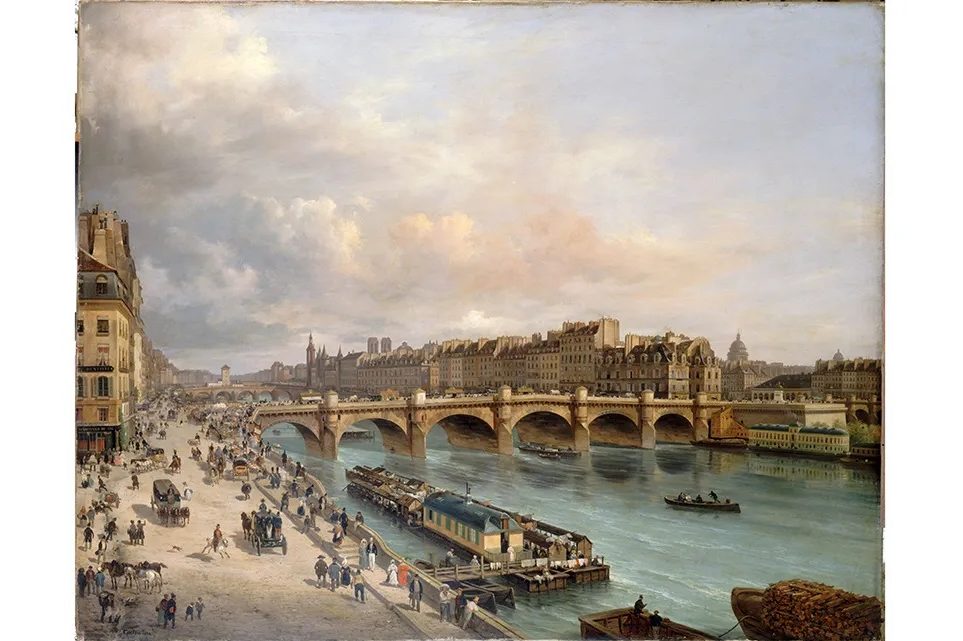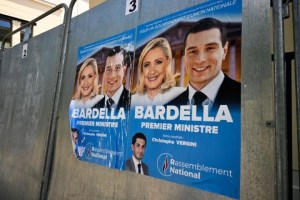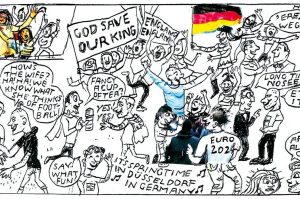Open one of the major novels by Honoré de Balzac and you are likely to encounter a sentence such as this, from Cousin Bette: “Towards the middle of July, in the year 1838, one of those vehicles called milords, then appearing in the Paris squares for the first time, was driving along the rue de l’Université.” Or this (from César Birroteau): “On winter nights there is no more than a momentary lull in the noise of the rue Saint-Honoré.” It is the same story in Père Goriot (rue Neuve-Sainte-Geneviève), Cousin Pons (Boulevard des Italiens) and others. From the first words of the tale, the reader is cast into the drama of the street.
One of the first things to beware of is the mud. White silk stockings and shiny shoes are always at risk
Few people can be as familiar with the Paris of Balzac as Eric Hazan, both in its literary manifestation and its lamentably scarce surviving patches. In the roughly ninety volumes of The Human Comedy, Hazan writes, Balzac “portrayed many female beauties, but he certainly never imagined or met a creature as ‘sparkling and proud’ as his beloved city.”
Hazan, the founder of the left-wing publishing house La Fabrique, loves it almost as much, in his own exasperated way. In his earlier, encyclopedic book, The Invention of Paris, he deplored the car-dependent abasements, the money-making demolitions and Pompidou-inspired defacements the city has suffered in recent times. The Invention of Paris was described by one reviewer as “fierce,” Balzac’s Paris is a more genial affair. Hazan is charmed to be in the company of his hero, and for the course of a 200-page tour we are pleased to follow along.
One of the first things to beware of is the mud — screen adaptations don’t mention this. White silk stockings, white waistcoats, shiny shoes — all are at risk. Eugène de Rastignac, hoping to be received by a society hostess, despite taking “a thousand precautions to avoid being spattered with mud… had to have his boots polished and trousers brushed at the Palais-Royal.” The ambitious young schemer had arrived in the capital only to discover that “this Paris of yours is a dunghill.” He is speaking to the nefarious Carlos Herrera (Vautrin), who offers a rascally defense: “And a funny old dunghill it is.”
With Hazan navigating a safe path in Balzac’s Paris, we learn that a form of street lighting was introduced in the early nineteenth century — oil lanterns, suspended from a system of ropes and pulleys stretched between the houses — and that Balzac found them “hideous.” He preferred the “gloomy passages and silent cul-de-sacs… between midnight and two in the morning,” where “the true poesy” of Paris is encountered. (It still exists in pockets.) Hazan knows Balzac so well that he can make an off-the-cuff remark such as: “His Parisian society is overpopulated with blondes — Béatrix, Honorine, Paquita” and others. Hair is also “black and shiny as satin” and “blue-black.” As for brunettes, “probably the most common then as now,” they are “absent from The Human Comedy.”
He is a good guide on the great Balzacian topic of money. Addressing the troubling question of equivalent present-day values, Hazan puts it in a literary context: royalties for a new book c.1840 were “around one franc per copy and rarely were more than one or two thousand copies of a new novel printed.” A footnote prepared for the present edition (the book was first published in France in 2017) estimates that one franc was worth roughly $2.4 in 2023. Contracts could be negotiated up or down. “I want one franc per copy and will let you print 1,300 for 1,000 francs,” Balzac informed the publisher of The Country Doctor in 1832, one of numerous volumes written in the first half of the decade. To secure the deal, he offered a synopsis, specifying dates for proofs and publication — “all without having written a line,” as Hazan relates. Balzac’s sense that he needed to “guard myself against my own facility” will find agreement from even the most ardent admirer. The Country Doctor, dashed off to fund a trip to Rome, is among the more feeble of his novels.
The Invention of Paris offered a feast of citation, sometimes occupying the bulk of a page, and this book does the same. It would be easy to assume that the great anatomist wrote about everything of moment that was happening in Paris and its environs in the first half of the nineteenth century, but that would be wrong. “There is nothing about the stations and railways that were beginning to mark the city with their cuttings, glass roofs and metalworks.” This despite the fact that Balzac himself often took the train.
From Hazan’s perspective, there are few examples of notable scenes “in a working-class environment. Here and there we meet workers, but only in passing.” More emphatically, he claims that “the people are the great absentee of The Human Comedy.” This is because “Balzac’s characters, whether bourgeois or aristocratic, have no business in the working-class suburbs.”
The claim seems too strong — Balzac’s streets are dense with lowly types striving to make a living; but the founder of La Fabrique (literally, the factory) must have in mind “the people” as a political mass. It is one of a few passages in this pithy book that would benefit from greater elucidation. Only rarely does Hazan introduce himself into the historic urban drama, writing, for example, that the transformation of the once poetically “dark and dirty” Marais into a fashionable district has created a “disaster zone.”
This article was originally published in The Spectator’s UK magazine. Subscribe to the World edition here.












